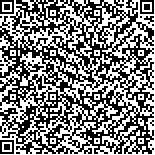| 本文已被:浏览 1499次 下载 997次 |

码上扫一扫! |
|
|
| 基于气体射流的气液两相流动减阻特性 |
|
谷云庆1,2,牟介刚1,2,代东顺1,2,郑水华1,2,蒋兰芳2,3,吴登昊2,3
|
|
(1. 浙江工业大学 机械工程学院,浙江 杭州 310014;2. 浙江工业大学 过程装备及其再制造教育部工程研究中心,浙江 杭州 310014;3. 浙江工业大学 之江学院,浙江 杭州 310014)
|
|
| 摘要: |
| 为了明确射流表面减阻特性,基于气液两相流动原理,建立具有射流功能的气液两相流动减阻计算模型,采用数值计算方法,通过RNG k-ε湍流模型对射流表面不同射流方向角、以及不同气体射流速度情况下的流场进行数值模拟及实验验证,分析气体射流对壁面黏性阻力、减阻率及流场的影响,研究气体射流的气液两相的减阻特性。结果表明:气体射流表面能够减小壁面黏性阻力,具有较好的减阻效果;四种射流方向角下,射流表面减阻率均在气体射流速度为5m/s时达到极大值,并且当射流方向角在xoz平面为-30°时,减阻率最大,为7.18%;数值模拟的减阻率效果略高于实验结果;气体射流的气液两相流动对壁面边界层进行了有效控制,减小了壁面的黏性剪应力和雷诺应力,导致壁面的黏性阻力减小,使得射流表面具有减阻性能。 |
| 关键词: 射流 两相流 减阻 数值模拟 黏性阻力 |
| DOI: |
| 分类号: |
| 基金项目:国家自然科学基金项目(51305399);浙江省自然科学基金(LQ15E050005)。 |
|
| Drag Reduction Characteristics on Gas-Liquid Two-Phase Flow Based on Gas Jet |
|
GU Yun-qing1,2,MU Jie-gang1,2,DAI Dong-shun1,2,ZHENG Shui-hua1,2,JIANG Lan-fang2,3,WU Deng-haO2,3
|
|
(1. College of Mechanical and Engineering,Zhejiang University of Technology,Hangzhou 310014,China;2. Engineering Research Center of Process Equipment and Its Re-Manufacturing Ministry of Education,Zhejiang University of Technology,Hangzhou 310014,China;3. Zhijiang College,Zhejiang University of Technology,Hangzhou 310014,China)
|
| Abstract: |
| In order to clarify the drag reduction characteristics on jet surface,a gas-liquid two-phase flow drag reduction model with jet function was established based on the two phase flow principle. Flow field with different jet direction angle and different gas jet velocity on the jet surface were numerically simulated using the RNG k-ε turbulence mode and experiment. The effects of gas jet on the wall viscous resistance,drag reduction rate and the flow field were analyzed,and the gas jet drag reduction characteristics of gas liquid two-phase flow were investigated. The results show that gas jet surface can reduce viscosity resistance on the wall,which has a good effect on drag reduction. Under the four kinds of jet angle,the drag reduction rate reached the maximum value when the gas jet velocity was 5m/s. The maximum resistance reduction rate was 7.18% when the jet direction angle on the xoz plane was -30°. The drag reduction rate of numerical simulation is slightly higher than the experiment value. In addition,gas-liquid two phase flow can also effectively be controlled by the boundary layer,which can reduce the viscous shear stress and Reynolds stress. It can also decrease viscous resistance of the wall,and the jet surface has drag reduction performance. |
| Key words: Jet Two phase flow Drag reduction Numerical simulation Viscous resistance |